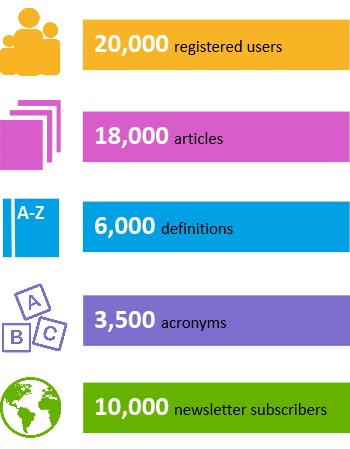About Designing Buildings
Put all construction industry knowledge in one place and make it available to everyone for free

Construction in the UK employs 2.4 million people in 340,000 organisations, each one of which is creating and accessing a vast amount of expert knowledge. Everything from how to prepare a brief for a new project, right through to getting tax breaks for water efficient taps. But that knowledge is inaccessible, fragmented and dispersed. If we integrate it into a single resource that is easily accessible by everyone, the construction industry will be more efficient, more collaborative, more innovative and it will make fewer mistakes.
Watch our 55 sec YouTube video.
[edit] Our stats
Designing Buildings is the most popular construction industry website in the UK. It gives free access to 18,000 articles about the planning, design, construction and operation of built assets. Users can find articles about things they don't know, and write articles about things they do.
The knowledge it holds is curated, structured and linked together to create a single, growing, evolving resource. Thousands of construction terms and industry acronyms have been defined and hundreds of thousands of internal links help users get to the knowledge they need as quickly as possible.
Designing Buildings is supported by:
- The Chartered Institute of Building
- The Institute of Historic Building Conservation
- BSRIA
- The Chartered Institute of Architectural Technologists
- ECA
It is owned by Designing Buildings Limited, a company founded by project manager David Trench CBE FCIOB , architect Dr Gregor Harvie, construction law solicitor Richard Winward LLB FCIArb FCInst CES and chartered banker and finance director Martin Cantor.
It's refers mainly to processes and practices adopted in England and Wales, although much of the content is also applicable in Scotland and Northern Ireland, and users in many other countries will find it helpful.
- To get started see our Quick Start Guide.
- For information about using the site see our Help page.
- For guidance about writing style see our quick style guide.
- For terms of use see our terms and conditions.
- You can contact us by emailing [email protected].
Featured articles and news
Licensing construction in the UK
As the latest report and proposal to licence builders reaches Parliament.
Building Safety Alliance golden thread guidance
Extensive excel checklist of information with guidance document freely accessible.
Fair Payment Code and other payment initiatives
For fair and late payments, need to work together to add value.
Pre-planning delivery programmes and delay penalties
Proposed for housebuilders in government reform: Speeding Up Build Out.
High street health: converting a building for healthcare uses
The benefits of health centres acting as new anchor sites in the high street.
The Remarkable Pinwill Sisters: from ‘lady woodcarvers’ to professionals. Book review.
Skills gap and investment returns on apprenticeships
ECA welcomes new reports from JTL Training and The Electrotechnical Skills Partnership.
Committee report criticises UK retrofit schemes
CIOB responds to UK’s Energy Security and Net Zero Committee report.
Design and construction industry podcasts
Professional development, practice, the pandemic, platforms and podcasts. Have we missed anything?
C20 Society; Buildings at Risk List 2025
10 more buildings published with updates on the past decade of buildings featured.
Boiler Upgrade Scheme and certifications consultation
Summary of government consultation, closing 11 June 2025.
Deputy editor of AT, Tim Fraser, discusses the newly formed society with its current chair, Chris Halligan MCIAT.
Barratt Lo-E passivhaus standard homes planned enmasse
With an initial 728 Lo-E homes across two sites and many more planned for the future.
Government urged to uphold Warm Homes commitment
ECA and industry bodies write to Government concerning its 13.2 billion Warm Homes manifesto commitment.
From project managers to rising stars, sustainability pioneers and more.
Places of Worship in Britain and Ireland, 1929-1990. Book review.























